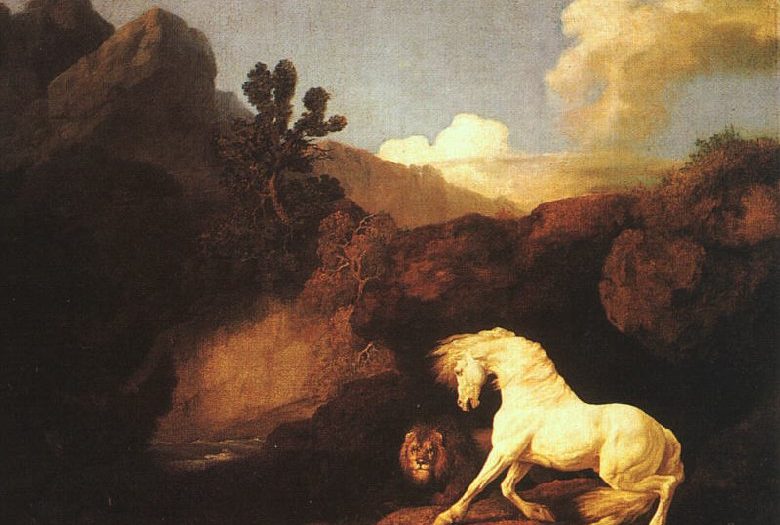Look at this painting. It tells a powerful story. Where is your attention focused? Now look away and see if you can describe the landscape that surrounds the frightened horse and hungry lion.
Nine out of ten of you will not be able to recall the rock outcropping, evergreen shrub, or dramatic sky that frames this scene of pure terror.
Like the startled horse focused on the crouching lion, you were probably focused on this pair of animals compressed into the painting’s lower right corner, which barely makes up 1/5th of the painting.
This is but one example of the human mind’s typical bottom-up reaction to attention found in the book, “Rapt – Attention and the Focused Life” by Winifred Gallagher. She explores the basic premise: What we think about we bring about.
Do we approach life from a restrictive, negative viewpoint, or a more worldly and open positive mindset? Rapt offers many interesting insights on how brand and business storytellers tell their CSR stories, and how those stories are received by the public.
“When you feel frightened, angry, or sad reality contracts until whatever is upsetting you takes up the whole world – at least the one between your ears. Life seems like a vale of tears, the future looks bleak, and the only memories that come to mind are unpleasant. The best explanation for why bad feelings shrink your focus is that in a potentially ominous situation, homing in on and reacting to any trouble quickly is more important than taking your time to get the big picture.”
When you think about it, the bottom-up grip the reptilian, fight-or-flight, brain has on your attention is confounding.
Business storytelling and fear
It’s surprising but true that…
- You’ll work harder to avoid losing money than you will to gain the same amount.
- You’re likelier to notice threats than opportunities.
- You’ll spot an angry face in a crowd of cheery people much faster than a cheery one in an angry crowd.
- You’ll process and remember negative material better than the positive sort.
- You’ll spend more time looking at photographs depicting nasty rather than nice behaviors.
- You’ll react to critical words more slowly and with more cogitation than to flattering ones.
- You’ll listen longer to complaints about yourself than to compliments.
- Even when you sleep, most of your dreams are the bad kind.
- On your birthday, you’re up to 20 percent likelier to have a heart attack, perhaps prompted by stress caused by fears of aging or disappointed hopes.
Rapt explores the phenomena that the main reason why we’re wired to pay attention to unhappy and frightful emotions is that they attune us to a potential threat or loss, which makes us solve the problem to survive.
Rapt is also about the positive, top-down approach to attention. The book points out that if fear and sadness warn us of danger and loss, joy, curiosity, and contentment invite us to reach out and explore the world.
For brand and business storytelling, which do you think is the best approach to creating a sustainable movement?
“Horse Frightened by Lion” is a famous painting by 18th century artist, George Stubbs. According to Winifred in her book, Rapt, “Stubbs knew that a ‘high-value’ idea or emotion is as compelling as a flash of lightening or volley of thunder, and it biases the competition for your attention so thoroughly that everything else fades into the background.”













at 6:23 am
Park,
Love this, and the book sounds fascinating. I’m reading Blink by Malcolm Gladwell right now and it sounds similar.
I’m glad you popped in to YaffeTidbits to find my post, as reading this was a great start to my day!
Thanks,
Jen
at 4:55 am
[…] not. It’s human nature to focus on the bad and sequester the good. It’s an odd condition, indeed. Do you know of a company that is telling their CSR story […]